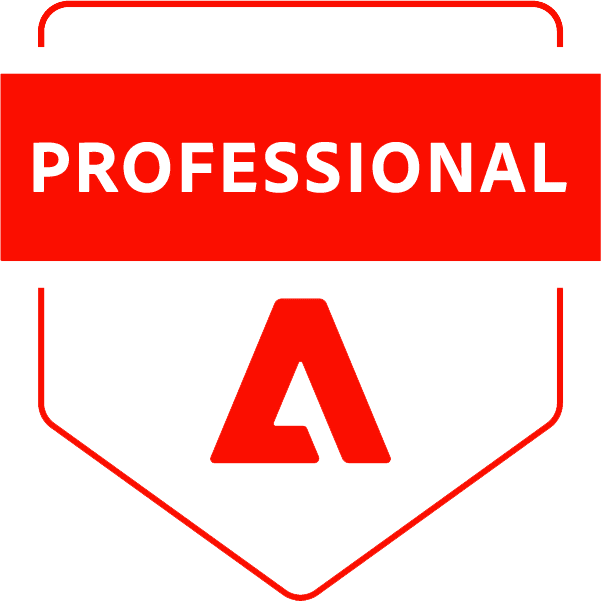
In the age of internet supremacy and the digital revolution, eCommerce businesses can only become successful when there’s an influx of regular traffic on their websites. This includes both organic traffic and ad traffic, such as those invasive personalized pop-ups on every website you visit based on your search engine cookies.
But the internet users don’t appreciate these paid advertisements as they consider them as an invasion of their privacy. The desirable method of attracting traffic to your eCommerce site in today’s day and age is through organic means — eCommerce SEO is the way to go.
Want to learn more about the organic methods of getting traffic to your eCommerce site? Keep reading.
In this article, we will begin by understanding the importance of organic traffic. Thereafter we will discuss the various elements of eCommerce SEO. Moving on, we will list out the best practices for directing more and more regular organic traffic to your website to grow your business. So, let’s begin.
Importance of Organic Traffic
Today, the majority of internet journeys begin from search engines. When users look for any information, they use relevant keywords to search for it, and in return, both paid and organic results are shown to the user.
All website traffic that comes through search engines such as Google, Bing, Yahoo, DuckDuckGo, etc., when users click on relevant links to their various search queries, leaving behind the sponsored(paid ads) ones, is recognized as organic traffic.
Organic traffic is always more likely to convert a visitor into a customer as the user has found your website through their search results based on their specific search intent. When the user reaches your website without the aggressive, invasive, and unwanted bombardment of paid ads, they browse your products/services with an intent of curiosity.
There are myriad other benefits of attracting organic traffic to your website, which is as follows:
- To begin with, the methods of attracting organic traffic to your website are considerably more cost-effective than your average paid ads. In the long run, the time and money spent in creating quality content for your website, or creatively displaying products on sale, will help your website attain top positions on the search engine results page.
- Another benefit of organic traffic is the high intent of the user landing on your website, as mentioned above. When a user clicks on an organic link on the SERP, they find suitable products and services they have been searching for, increasing their chances of investing their money. Hence, organic traffic leads to better conversion rates.
- Organic traffic overpowers the bot-generated traffic through paid means and establishes trust and better domain authority for your website under search engine algorithms — owing to better conversion potential and user intent.
- You don’t have to pay per click for getting more visitors to your eCommerce site because when a user clicks on an organic search result, no charges are asked from you for the same.
- Your eCommerce site gains popularity and credibility when it appears in the top results of search engines. Most internet users have learned to skip paid ads and sponsored search results and look for high-ranking organic links to click.
For all of these reasons, and a few more maybe, it’s crucial to learn ways to increase organic traffic to your eCommerce store through search engine optimization.
Understanding the Elements of eCommerce SEO
Search Engine Optimization is the process of improving the visibility of your eCommerce store and its products on the search engine results pages by optimizing various elements of its website. For eCommerce stores, SEO is a trickier process because of the large number of pages for various shopping categories and products. Ecommerce SEO can be broken down into four main types, which are discussed below.
On-Page Optimization
Individual pages on your website appear in search results based on the keywords used by a user. The process of optimizing each page to rank better on the SERPs using targeted keywords and phrases to attract prospective customers out of the target audience is called on-page optimization. Elements that can be optimized in this process include page URL, title tags, meta descriptions & titles, page content, image alt-text, etc.
Off-Page Optimization
Marketing tactics that come out of the purview of on-page optimization, including social media marketing, external link building, influencer marketing on various platforms, guest blogging, networking, etc., to promote your eCommerce store and its products/services fall into off-page optimization. Everything related to SEO that happens off of your website can be included in this category.
Local SEO
Local SEO is especially important for all those local businesses who have not started as dedicated eCommerce stores but shifted bases from physical stores or diversified their business to find additional success with the internet crowd. If you want to establish your local business’s online presence and sell products online by attracting a target audience in a specific area, you need to implement local SEO techniques such as:
- Make a GMB (Google My Business) account with complete details about your online store.
- Submit complete information about your website to various local directories specific to your area.
- Keep in mind the local audience while creating content for your marketing campaigns.
Technical SEO
Optimization to make it easier for search engines to crawl and index pages from your eCommerce website, and other backend stuff, comes under technical SEO. For technical SEO, you should improve the page load speed of your website, create a sitemap, optimize your website for mobile devices, fix technical snags, use web analytics tools, etc.
Best Practices to Excel at Attracting Organic Traffic for eCommerce Websites
Now that we have acquired a basic understanding of how eCommerce SEO works, let’s discuss some of the best practices for optimizing your eCommerce store for attracting maximum organic traffic.
1. Auditing the website every now and then to identify issues
The first step towards optimizing your eCommerce store is identifying the current situation of the website. Before you begin making changes to your website, you need to have a good understanding of the issues that need to be resolved and the current performance of pages on your website. A website audit comes in handy for this purpose.
A website audit provides you with detailed data and analysis of how different pages and your website as a whole are performing in terms of traffic and conversions. The logic behind a website audit is to identify the areas that need improvement. The analysis it provides allows you to take data-driven steps in the right direction.
A website audit will identify issues of all magnitudes, from bigger ones to the minute. The idea is to equip you, the eCommerce store owner, to resolve these issues or shortcomings to improve the ranking of your web pages on the SERPs. The end goal is to attract maximum organic traffic to your website.
The areas that will need your attention during a website audit include broken links, large-sized image files, orphan pages(pages that lack any internal links), missing meta descriptions or titles, etc.
You can use one of the many powerful free-to-use online SEO audit tools to get a good picture of the necessary changes required on your eCommerce website — to make it more palatable for the search engines, and in turn, more visible to the target audience.
2. Identify and Implement Keywords Relevant to you eCommerce Website
Keywords are necessary. Targeting the right keywords can prove the difference between you and your competition. SERP rankings are heavily influenced by keywords relevant to your website’s sales domain. Once a website SEO audit is complete, you want to make the required changes by including keywords that can take your SERP ranking higher.
By incorporating the most relevant keywords, you can help various product category pages on your website rank higher individually against a user search. Not just that, you can improve the visibility of the content pages of your eCommerce website, such as its blog, if it has one, by using the right keywords.
Therefore, keyword research is more than helpful at this stage. The first step for keyword research is to shortlist the keywords currently gracing your website. You may use one of the many free-to-use keyword density analysis tools to recognize the keywords that occupy the most space on your website, along with their frequency. These tools also suggest keywords that you should target in addition.
The next and the most crucial step is to match these keyword suggestions with the long-tail and short-tail keywords and phrases being used by people to search in the niche of the products you sell on your eCommerce website. When you have this knowledge, you will have a better footing to target and incorporate these phrases. This will help you attain a higher rank on SERPs and more organic traffic.
Note that you need to use a mix of short and long-tail keywords as both have different search intents. Also, avoid over-stuffing of keywords as search algorithms don’t like it.
3. Work on the Architecture of the website
Website structure plays a crucial role in leading the website crawlers and search algorithms to rank your website higher. In other words, website structure is directly proportional to the ease of navigation on the website, both for the users and the search engines.
A well-structured website can be easily navigated by the visitors, and thus, it makes the user experience(UX) memorable. Since search algorithms have started giving more preference to UX in the last few years, better UX ensures improved page rankings for your website.
You must pay close attention to the architecture of your website to make it simpler to use and navigate. The flow of your eCommerce website should be such that it lets visitors easily find the products they are looking for. You should focus on guiding the visitors to the pages that they want to go to instead of having them figure it out on their own.
Some of the best practices that you should follow:
- Scalable hierarchy to ease the process of adding new products.
- The maximum number of clicks for a visitor to reach products from the homepage should be three or fewer.
4. Perform Competitor Analysis
Knowing what your direct competition is doing right can help you get ideas to improve your offerings and website experience for visitors. Your competition can be studied with the intent of learning from the successful practices that they follow and avoiding the mistakes made by them.
Competitor analysis is the process of analyzing the business model, marketing strategies, website structure, keywords used, etc., for a competing business. For your eCommerce business, you should perform competitor analysis on your competitors to draw lessons from their website building strategies and marketing techniques.
Identify the keywords and pages that attract a significant amount of traffic for your competitors, and establish the link between the traffic surge and the former. By doing this, you will have a good starting point to build on their successful strategies and make them even better.
Drawing lessons and copying every successful strategy are two different things, and you must make sure that you don’t adopt the latter. You should be mindful of maintaining a unique identity for your eCommerce website while taking inspiration from the success of your competitors.
5. Ensure Indexing of all pages on your website by the Search Engine
Ranking on the SERPs comes after indexing the web pages on your website. Indexing simply means listing a web page in the search directory of search engines. Therefore, without page indexing, a given web page will never make it to the search engine results page.
For Google, you can check whether web pages on your eCommerce website are indexed or not by searching site:yourdomain.com. This simple search query will give you a list of pages that are already indexed on Google’s search database. Alternatively, this information can also be found using Google Search Console.
If there’s any page that’s missing from the said list, you need to immediately work on indexing because any page may prove significant in increasing website traffic. Similarly, there may be some pages on your website that you might not want to be indexed for privacy reasons, etc. For these pages, you have the option of de-indexing them to prevent their visibility in search results.
6. Work on creating Quality Content for Marketing
The requirement for quality content can never be overlooked for any online business. Similarly, for an eCommerce store, the marketing strategies must always use the best quality content that is capable of holding a user’s attention.
Marketing content needs to be super interactive and engaging to bring the target audience to your eCommerce website. You must use interactive elements such as short videos, images, catchy graphics & taglines, infographics, etc. Increasing the interactiveness of the marketing content helps in making it popular among the masses.
Increasing popularity means that more and more people visit your website. Increased organic traffic eventually leads to better conversion rates through purchases.
7. Optimize Pages that matter
It’s only natural that all pages on your eCommerce website won’t perform the same. Some might be more successful than others and need more of your focus. But how do we judge their success? We can do so by analyzing some metrics such as dwell time, bounce rates, per page transactions, page speed, conversion rates, etc.
You can use an analytics tool such as Google Analytics to find out all of these metrics, and more, for every individual page on your eCommerce website. The steps to do so are as follows:
- Open Google Analytics
- Click on Behavior > Site Content > Landing Pages
- Sort according to your need
You can use this information to prioritize the pages that you want to optimize. Initially, focus on pages that bring in more organic traffic and revenue and then move on to the ones that need improvement.
Conclusion
We have established a good understanding of eCommerce SEO and its importance, to begin with. We have also discussed the best practices that can improve the influx of organic traffic on your eCommerce site. All you need to do is implement this knowledge into actionable goals and see your eCommerce business grow.







